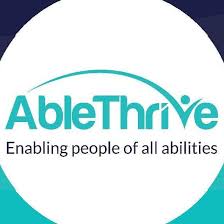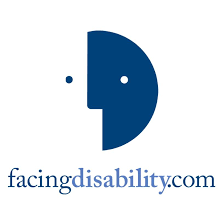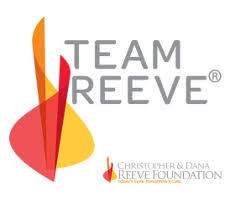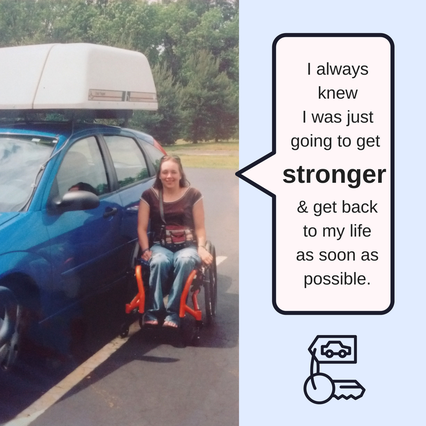 (This blog tells my family's story. To see more, click "blog" at the top of this webpage.) Beth led us to unexpected places after her spinal cord injury. “I always knew I was just going to get stronger and get back to my life as soon as possible,” she said. On May 10th, Beth drove us in her little blue car to the Michigan Wheelchair Games. Three years had passed since her injury and one year since her first swim meet in the same 25-yard pool. She competed using the forward freestyle stroke for the first time. Not a smooth endeavor and quite a bit slower than her backstroke. She dropped 30 seconds off of her 50 back race compared to her time one year before. I drove home from Michigan so Beth could rest. But first, she sang and danced in the passenger seat to her favorite John Mayer song. “I am invincible, as long as I’m alive!” Déjà vu. I loved our road trips. One week later, we attended the Ohio Wheelchair Games. Two weeks after that, Beth competed in Bowling Green at her first outdoor meet. She accepted my help to wheel over the grass to GTAC’s team camp. Her friend on the team was not in sight, so she picked a spot out of the way. She liked being outside and rarely complained about the heat. Hot weather raised her body temperature and I monitored it with a forehead gauge. She claimed to sweat a little, but I never saw it. Beth alternated her arms for the 100-meter backstroke instead of the double-arm technique, while the other swimmers in her heat swam a 200-meter event so she wouldn’t have to finish the race alone. Her swim times varied more from meet to meet than they did for her able-bodied teammates. She unexpectedly swam her fastest times by far in the 50-meter traditional forward freestyle race. She touched the wall at one minute and 28 seconds, still 15 long seconds away from the most difficult American Record in her S3 classification. I suspected that the swim parents with stopwatches fudged (improved) her time a little. Maria graduated from high school with honors in late May. We hosted a big graduation party on our backyard deck with John’s flowers and walkways providing a colorful backdrop. Maria chose to attend Tiffin’s Heidelberg College to major in education and take advantage of their acclaimed music program. She had intended to be a teacher ever since she toddled into her dad’s classroom. Since her sister’s injury, she decided to teach young children with a disability. She would be a passionate advocate for her future students. Always on the go, Maria babysat often, worked at a video store, took voice lessons, and performed in community theater. I loved her energy and enthusiasm. We all lived in the same house, but some evenings I didn’t see her. We met at Taco Bell sometimes to catch up over burritos and fountain drinks. Meanwhile, Beth made big plans for a summer to remember.
2 Comments
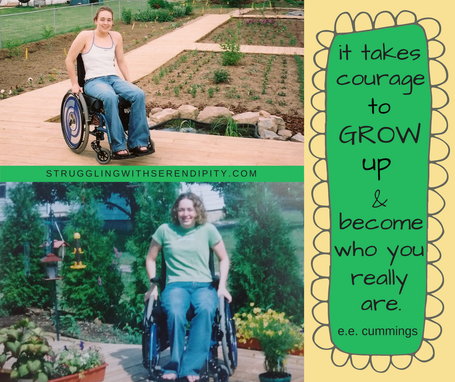 (This blog tells my family's story. To see more, click "blog" at the top of this webpage.) The sunshine of a new spring, along with my once-a-week counseling sessions, kept my well of worry from overflowing. Nearly three years post-injury, Beth showed me that her life with quadriplegia could be so much more than I had imagined at first. My anxiety dropped from a scary level to something more manageable. Chronic head pain remained a challenge. My obsession with worst-case scenarios improved from hourly to only some days. Most teenagers felt invulnerable and didn't worry about risks. That group included my youngest, despite her disability. We lived a few blocks from the high school and Beth liked the idea of wheeling there instead of driving with me. My first thought: NO! How could it be safe for her to cross alleys and streets in a wheelchair? Beth wanted to try. On a weekend, I walked next to her on a trek to the high school. The first obstacle involved wheeling over driveway stones to get to the sidewalk in front of our house. Next, the old neighborhood had broken sidewalks and no curb cuts. We tried a narrow alley instead that had bumps and stones and potholes. And almost zero visibility for cars with bushes blocking the view. When we crossed Tiffin’s Washington Street in between parked cars, drivers approached fast. On the high school grounds, there was no way to avoid either a long incline at the front entrance or a harder slope into the parking lot towards the automatic doors. I continued to drive her to and from school. The Quiz Bowl team finished a winning season, undefeated in the league. Against my advice, again, Beth joined the high school spring musical, Hello Dolly. She wore a headset to manage the stage crew while Maria shined in the lead role. After a show, I conversed with friends in the lobby without making a quick excuse to leave. The girls stayed out late at cast parties that followed the show's success. John and I dropped our strict curfew rule after the car accident. A spinal cord injury had changed our perspective, with a new awareness of what really mattered. And what didn't. Beth wasn’t happy with her ACT score for college, so she studied practice books before taking the test again. Not my idea. The second ACT improved on her first composite score by a surprising four points; she credited her English teacher, Mrs. Kizer, for her high English score. Beth set goals on her own and I supported her unconditionally, but not for bragging rights. More than anything else, I needed her to be okay, to be really okay, as she claimed the night of the accident. Was it too much to wish the same for myself, for everyone I loved, and for the rest of the world? Flowers burst into bloom in John's big garden with the ramped walkways. I loved the sunshine. Keeping up with Beth kept me busy and distracted most days, especially when my headache settled at a lower baseline. Lots of comings and goings. School, after-school activities, volunteering, swim practices, and time with friends. Sometimes I drove while Beth, often tired, dozed in the passenger seat. Overbooking her time shifted from a frequent inclination to an ingrained habit. She didn’t want to miss out on anything. Next week: Beth’s first swim competition with the forward freestyle! (This blog tells my family's story. To see more, click "blog" at the top of this webpage.) After every swim practice, Beth leaned into a corner, put her hands up on the ledge, and raised her body up as far as she could — before being lifted out of the pool. A familiar dynamic: complete assistance very (very) slowly becoming partial assistance, with her clear expectation that it would be no assistance in the future. As a junior in high school, Beth managed to keep up with a full school day, swim practices, volunteering, and extensive homework. She typed lab reports and essays on a standard computer keyboard. The early version of DragonSpeak, voice recognition software, never was used. She didn’t use the typing aid I bought that strapped on her hand or the supports to rest her forearms on. Beth used three fingers to type. She always relied the most on her left index, the only finger she could move a few inches, to press down on the keyboard. The useful left index also worked her laptop’s built-in mouse, set to respond to a soft touch. The same finger also hit letter keys on the left side and center. The index and pointer on her right hand contracted in an arc and focused on the right side of the keyboard. To type with those two fingers, she had to move her right hand to place a fingertip on a specific key, since she couldn’t move those fingers. When a finger or hand spasmed, she used another and kept going. Her accuracy was amazing, but in high school, her typing (and handwriting) was significantly slower than her peers. Against my advice, she took the American College Test (ACT) with no accommodations. Beth stubbornly refused extra time for assignments and tests. Her application for a lift chair to use at the pool was approved. We met with senior students at the University of Toledo who took Beth’s measurements and discussed the design. The chair would have a standard seat with back support and a toggle switch powered by a motor with a rechargeable battery. Sitting on the seat, she would push or pull a toggle switch to lower or raise the seat. The finished project impressively accomplished the task. At the YMCA, Beth stayed in her manual chair while I pulled the lift chair to a spot on the deck close to the water. She adjusted the seat bottom of the lift to a position slightly lower than the seat of her manual chair before moving onto the lift by herself. She used the toggle switch to move the seat down to almost floor level. From there, she used her arms to scoot to the deck and into the water without assistance. Unfortunately, we could not store the chair at either pool. I could barely lift the heavy device to put it in and out of the car, so it found a home in our living room. Beth used the lift chair to get on and off the floor independently, sometimes stretching out to do her homework while a familiar movie played in the background. Austin Powers movies were comedy favorites. John made the girls laugh with lines from silly movies. Beth found humor in her disability that her friends and family shared. At school, a friend scolded her for not standing up during the Pledge of Allegiance. When Beth’s friends gathered at our house, I loved to listen to their easy laughter.
Next week: more swimming serendipity... (This blog tells my family's story. To see more, click "blog" at the top of this webpage.) Two and a half years after Beth’s spinal cord injury, I expected a gradual catharsis with my weekly counseling. But sessions still only stirred up tearful regrets for causing the accident. I thought that I must be doing something wrong, that I failed at therapy. After, I sat in the car, breathing deeply, until I carried no visible baggage home. I scheduled more appointments, hoping to find the person I had been before the accident. I was determined to redeem myself with Beth, though others needed me, too. And I needed them. I was intensely grateful for the people in my life. I wished gratitude could cure anxiety. Trying to look normal was a challenge on days when worst case scenarios dominated my thoughts. I had to concentrate to pay attention, even with my immediate family, though there was no lack of love or genuine interest. Unlike Beth, I had no grand goals. What I basically wanted — after magically erasing Beth’s injury — was the absence of pain. No headache that ebbed and flowed. No guilt and depression. No anxiety that also ebbed and flowed. Some days, Beth emanated vulnerability, a lifelong quad perpetually haunted by scary health risks: autonomic dysreflexia, serious infections, bladder stones, blood clots, and pressure sores. On other days, she looked to me like the happy and healthy teenager that she actually was. As a high school junior, Beth never saw the need to say no to extra activities. On top of AP classes and too much homework, she volunteered for fundraisers with the Raptors and for community events with the National Honor Society. She wrote for the school newspaper and worked on the yearbook. She followed her brother’s lead and earned a spot on the Quiz Bowl team. Her specialty: literature. A doctor also asked her to exchange emails with another teenager with a new spinal cord injury. Beth needed me less often, but I was there when she did. At the YMCA pool, on her forward motion quest, she progressed to spending more time with her head above water than under it. I read a book again while I sat on the bleachers, instead of watching every minute. One evening, she finished a backstroke lap as her high school’s swim team arrived to practice. As a few friends stopped to say hello to her, their head coach, Peggy Ewald, introduced herself to Beth... A fortunate accident. Serendipity. 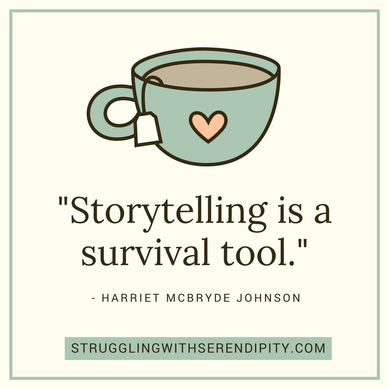 (This blog tells my family's story. To see more, click "blog" at the top of this webpage.) During Beth’s first summer vacation at home with a spinal cord injury, she focused on time with friends. We rode with another mom in her van full of excited teenagers to an N’Sync concert in Michigan, with the words “PopOdyssey N’Sync” in bright paint on the back window. Near Detroit, a traffic jam on I-75 turned into a party. Girls blared music, waved signs, and shouted to each other across the highway lanes. That might have been fun except for temperatures in the 90’s with high humidity. The van had no air conditioning and there was no breeze as we inched along. Beth flushed with fever, her body unable to sweat to cool down. I carried Tylenol, but nothing to drink it down with since we didn’t anticipate the traffic jam. I encouraged her to take it without water, but she wanted to wait. Approaching the stadium, I frantically waved the handicapped-parking placard out the window at the traffic cop to avoid another jam of cars. Finally parked, I hurried Beth out of the van to the first drink stand for cold bottled water. She took the Tylenol and drank extra water before we found our seats. In shade, Beth felt better before long and danced with her friends. They watched Justin Timberlake, the 20-year-old who stole the show in the pulsing lights on the stage. Our summer comings and goings confused Beth’s high-strung African Gray parrot. He plucked out feathers and injured his skin. A vet put a plastic cone around his neck, making him more miserable. We wondered if Timber had been taken from his parents too soon, and a friend recommended a bird sanctuary in Cleveland. Whether it was my fault or not, the parrot toddler needed more help than we could give. I drove him to the sanctuary, which included an extensive outdoor aviary with dozens of birds. Beth and I cried when we said goodbye to Timber, but we were glad to hear that he recovered quickly, delighted in his new home. Early on an August Saturday, firemen lifted Beth in her wheelchair onto a boat at a Sandusky pier on the Lake Erie shore. I skipped the fishing part of the Fishing Without Boundaries event. When the boats returned, I heard about how Beth caught more perch and walleye than her dad. The boat’s young first mate watched three fishing poles and handed one to her whenever he had a nibble. She reeled in about two dozen fish and let someone else take the fish off the hook. A friendly crowd gathered for a picnic near the docks. A mom told me how children at school made fun of her daughter, who grew up feeling like a victim. A dad shared his ongoing battle with pressure sores, reminding me of an article I read about a woman who had both legs and part of her trunk amputated because of pressure sore infections. Surrounded by the perspective of significant disability, I understood the mental argument that I should be happy and grateful. I was grateful. I could get through most days without crying, and yet... ...part of me sludged through guilt that felt like grief. ...through depression and anxiety that made me afraid of the future. Catastrophes seemed to be waiting in the wings, for Beth, for me, for the rest of our family, for our friends, and for the world. I listened to Beth laugh with the other teenagers and wondered if she could avoid depression entirely.  (This blog tells my family's story. To see more, click "blog" at the top of this webpage.) Beth’s physical therapist, Laraine, showed her how to shift her body to trigger a leg spasm that bent her knees, an invaluable skill for changing clothes in bed. Lying on her back with knees bent, Beth hugged her thighs up and over her body. Feet in the air, she put a pant leg over one foot to begin, the opposite of what most do (putting a foot into a pant). After the pants bunched at her knees, she pushed down on her thighs to straighten her legs. Then, rolling from side to side with effort, she pulled up the fabric a little at a time by hooking her left index finger (the one finger she could partly command) in a belt loop. The first year after her injury, Beth let me take over for the final stretch, though she always tried (and failed) to budge the zipper and hook the button. She refused to consider clothing with alterations, with the exception of flip-flops, her preferred footwear. I added a piece of thin elastic around the back heel and sewed it to each of the side straps so they would stay on. Getting in and out of cars sometimes scraped and smudged her unprotected feet, a consequence she judged to be acceptable. When her legs swelled, Beth used her new skill to deliberately trigger a leg spasm to stretch the muscles, move the blood, and reduce the risk of blood clots. She stayed active, and threw away the white compression stockings. Therapy continued three times a week after school. We met a woman with the same level of injury who proudly showed us her straight fingers on the padded armrests of a power chair, the result of a long concerted effort with hand splints and stretching exercises. Beth asked her favorite therapist for advice about the splints for quads that were generally recommended. As always, Laraine presented both sides of the issue. The rigid splints extended from the fingers to the elbow and could interfere with sleep. Others slept fine with the splints and wore them religiously. Laraine explained that for quads, straight fingers could hinder the ability to grasp items well with the tenodesis reflex. That made it an easy decision for Beth. She discarded the splints and chose more function over form. She owned wheelchair gloves but rarely used them, since she liked the ones with individual fingers that took a long time to put on. When meeting new people, she never hesitated to extend her calloused fist for a handshake, not worried about how her hands looked. Beth’s confidence was growing; she had more at 14 than I had at 42, though I worried about doors being closed to her because of her disability. The first year after her injury, I thought it was inevitable that her attitude would crash and burn at some point. I’m glad that I was wrong. More years would pass before I realized that she had the world at her fingertips, even after her injury. From Beth’s point of view, every door was open.  (This blog tells my family's story. To see more, click "blog" at the top of this webpage.) After two lost weeks, one in intensive care and one at home, I carried a nebulizer to the high school at lunchtime for Beth’s breathing treatment. Pneumonia had set back her stamina by months. A shortened day of school wiped her out, again. On edge and anticipating the next crisis, I felt an initial flash of fear when the phone rang, and relief when it wasn’t an emergency. For the first time in my life, I understood the compulsion to try to feel better through food. That didn’t work, but not for lack of trying. I joined the ranks of emotional eaters and had to buy bigger clothes. The completed elevator at school led to second floor classes for Beth, which created the need to carry her down the stairs during fire drills. I wrote a detailed procedure and helped a therapist from Green Springs lead the staff training. Several teachers volunteered to attend. The principal had bought a heavy vinyl sheet with four handles, two on each long side, like firemen used. Four teachers carried her on the sheet while a fifth moved her empty wheelchair. Concerned about hitting her head on a step, they lifted the sheet higher with extreme caution. “It took awhile for them to realize I don’t break,” Beth said. She also had a new favorite saying: “I’m not broken and I don’t need to be fixed.” During one drill, her Spanish teacher wore a football helmet to make her laugh. She put up with the drills, but disliked being carried outside on the vinyl sheet into a crowd of students. As more time passed, during a pre-planned drill, Beth talked them into breaking the rules with an unplanned stop inside the building at the bottom of the stairs, to lift her into the wheelchair. From there, she pushed herself outside. Riding the elevator every school day with a friend turned into entertainment. Sometimes they added their own elevator music. They flirted with boys on crutches, injured athletes who also used the elevator. When she accidentally bumped the alarm button and nothing happened, hitting the alarm on purpose became a joke. Beth loved to laugh and found humor in her situation that her close friends and family shared. Being a quad (quadriplegic) meant that you could not flip someone off with a middle finger, so raising a fist instead became a inside joke—though I knew that when she could do it the usual way, she wouldn't. At school, a friend scolded her for not standing up during the Pledge of Allegiance. They made summer plans to go to Cedar Point, famous for its roller coasters, to be first in line because of her wheelchair. At friends' houses or at ours, Beth liked to sit on the couch; when she was asked to get something in another room, she quipped about being tired from too much walking. “Everyone I know with an injury who is doing well has a sense of humor about it,” Beth said. “You need that.”  (This blog tells my family's story. To see more, click "blog" at the top of this webpage.) Seven weary months had passed since Beth’s injury. My favorite time of year, Christmas, was a blur. Ben came home from college and together our family of five visited grandparents, aunts, uncles, sisters, brothers, and cousins on the Lake Erie shore. When my Grandma Henning passed away, my parents moved from Lorain to the family homestead in Vermilion. Built by my great-grandfather, the old farmhouse never failed to invoke broad chords of memory along with tinges of sadness for my grandma’s absence. As a child, I was there every Sunday with my brother and sister and cousins, and parents and aunts and uncles. It was the place where I watched Grandma make sweet kuchen and grape jam (with the skins) and every kind of deliciousness. The place where I blew out birthday candles and found a four leaf clover that I pressed in my diary. The farmhouse also was a place that was inaccessible in every possible way, with the stone driveway, entry steps, and tiny bathroom that didn’t fit a small wheelchair. Beth didn’t mind. Ben and Maria handled the steps with the wheelchair. At the house in Lorain where my in-laws lived, also inaccessible, John’s oldest sister Jean greeted us at the door. She liked Beth’s wheelchair and wanted one of her own. Jean, born with Down syndrome, counted down the days to every family birthday and holiday. She knew that her January birthday was before John’s in February, so every Christmas, he teased her that his birthday was next. When we arrived back in Tiffin, Timber welcomed us home. I had photographs printed at a local store from the holidays. My smile in some of the photos contradicted my feelings, but not my goal. I focused on not giving the people I loved more to worry about, especially after I accomplished that spectacularly well with the accident. One of Beth’s presents was a molded piece of plastic that sat on the table in front of her and held playing cards in a vertical position. John and I played bridge with Ben and Beth using new bigger cards and the plastic piece. By the end of the evening, she put the plastic to the side and experimented. When she held the cards in her right hand with the tenodesis grip, she raised up a specific card with her lips. Then, she used her one moving finger to set the card on the table or adjust her grip. As Beth’s best friends arrived for New Year’s Eve at our house, we made a mess in the kitchen with my grandma’s brownie recipe. Beth christened her new fondue set with chocolate and an elaborate spread that included brownies, marshmallows, pretzels, and fresh fruit. The girls camped out in sleeping bags and watched the new Grinch movie, played with Timber, and dipped treats in chocolate. I listened to their easy, carefree laughter. For me, the New Year loomed with brewing threats, with emergencies and tragedies a heartbeat away.  (This blog tells my family's story. To see more, click "blog" at the top of this webpage.) Beth and her closest friends wore their new HOPE rings every day. I wondered about the different meanings of hope. For her friends, perhaps the hope of her walking again? For Beth? Probably the generalized hope for a happy future. And for me? Small, specific hopes like fewer infections and fewer antibiotics. Anything more could be wishful thinking. The physical trauma of Beth's injury had weakened her immune system. Through the first several months, there was always a health issue that I worried about, either increased congestion or coughing or fever or infection or nausea or spasms or swelling. "I began high school as a different person than I was in junior high." A rare intense storm ushered in the first morning of school, complete with hard driving rain, lightning, thunder, and high winds. I parked near the new automatic doors, pulled the wheelchair from the trunk, unfolded the seat, plopped the cushion on, zoomed to Beth’s open door, scooped her legs over the doorway, grabbed the outside seam of her pants, and lifted her to the wheelchair. The umbrella Maria held over us broke, so when the girls entered the building, they left a trail of water down the hall. I had a meeting scheduled with my supervisor for my new job, but I rushed back home first to change out of soaked clothes, frazzled and sick to my stomach. After my meeting, I had a list of immediate things to do for the employment office to start work the next day. Back at the high school at lunchtime, I could breathe easier when I found a smiling Beth waiting for me. I was relieved to hear that she had a good morning. "Kids stared a lot at first. They wanted to get my attention, to talk to me, to see how I had changed," Beth said. "I was already used to being stared at. They thought they would offend me by confirming that I use a wheelchair, as if I didn't know." She looked more pale than usual, completely drained. Beth’s low back ached, a result of the strand of sensation that remained connected to her spinal cord. I suggested leaving early with me for home—a futile request. 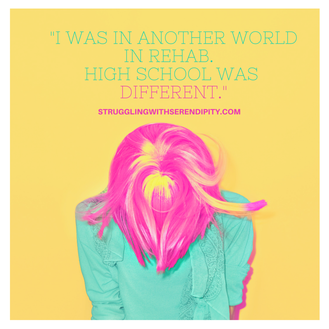 (This blog tells my family's story. To see more, click "blog" at the top of this webpage.) Beth’s days in the rehab hospital focused on long physical therapy sessions. It didn’t seem fair that it took so very long for her damaged muscles to respond in some slight way. At Beth’s follow-up with the surgeon, we viewed her latest x-ray, a side view of the neck that showed 6 screws instead of 12 holding the large titanium plate; the other set of 6 lined up perfectly behind. In spite of the doctor’s impressive surgical skills, Beth’s motor function remained absent below her level of injury, complete. The muscles in her hands and legs began to shrink, unattached to her spinal cord. No leg movement, besides spasms. No bearing weight on her legs. No standing. No walking. No request for mechanical braces or experimental treatments. No envy of those with expensive equipment, such as standers, or those who spent hours strapped to bicycles and other machines. And no waiting for a miracle. Beth was eager to start her freshman year of high school on time with her friends. On discharge day in early August, she hugged the nurses and aides goodbye, but not her therapist friends. She would continue to work with them three times a week in outpatient therapy. Beth could sit in her new blue wheelchair without feeling dizzy and pushed the big wheel rims to slowly move forward. With taxing exertion, she rolled her body on a flat bed to get more comfortable or to attempt getting dressed. Weak and wobbly, she sat up by herself and put her shoes on and off, though she couldn’t tie the laces. With effort, Beth could shift her bottom on the wheelchair cushion to prevent pressure sores. She ate and drank mostly on her own and kept trying to use her hands. She moved from the wheelchair to the bed more easily—with total help and a wood sliding board, newly made by my dad. “I was in another world at St. Francis," Beth said."Wheelchairs were the most common sights, everyone was completely accepting, and nothing about my injury seemed out of the ordinary. High school was different.” When we left the hospital room behind on a sunny August day, it felt like a fresh start. I returned Beth’s smile, hiding my apprehension over what the future might bring. The titanium plates had fused to fragments of bone, so she no longer needed the neck brace. She tilted her head a little towards the open car window, happy, as we turned up the radio and drove away on the country road towards home. A co-dependent team, we plunged into uncharted waters together. |
Cindy KolbeSign up for my Just Keep Swimming Newsletter by typing your email address in the box. Thanks!Categories
All
Archives
November 2022
|



 RSS Feed
RSS Feed





